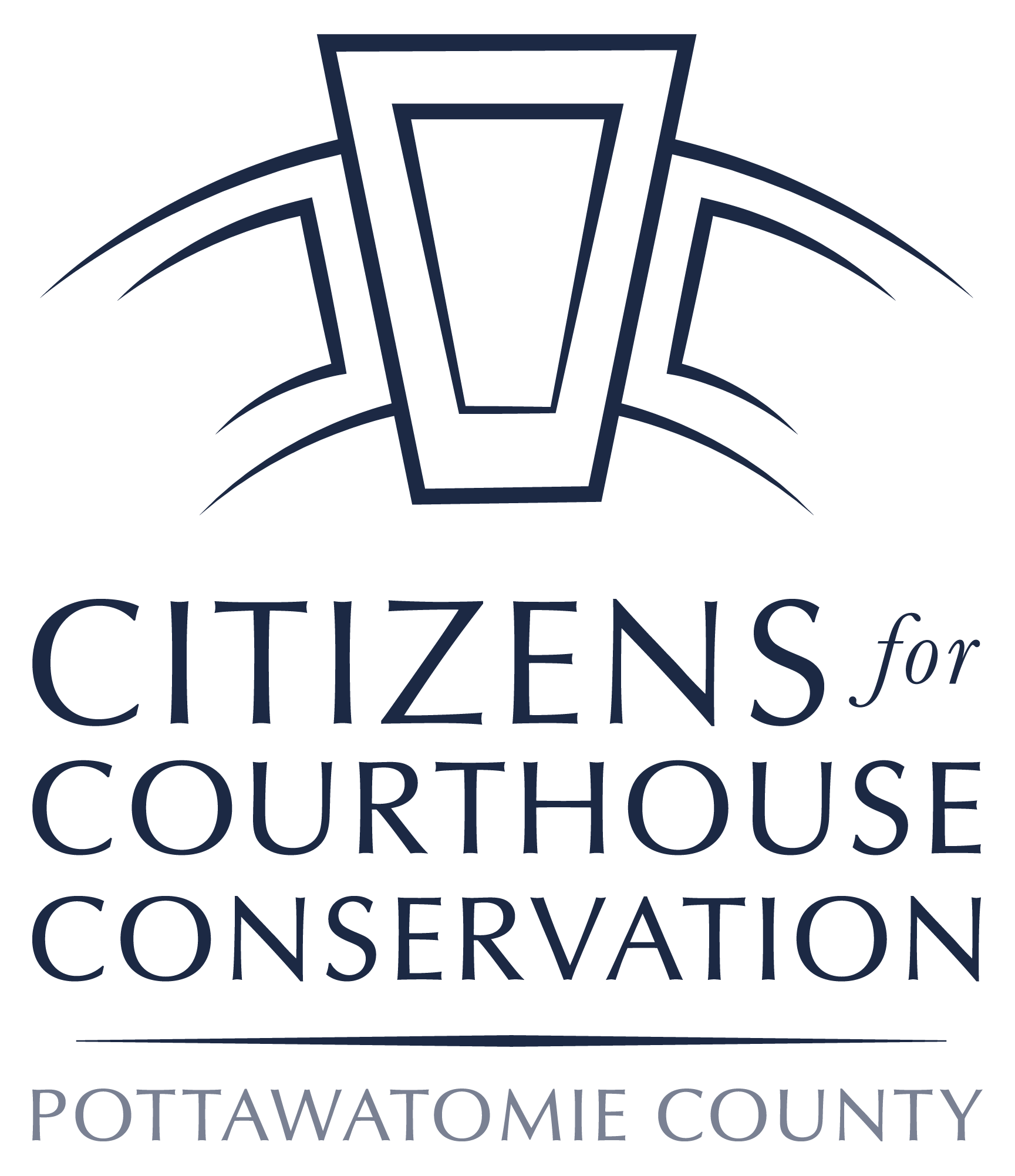30 Jul HISTORIC OR JUST OLD? Inside the courthouse Pott County is considering razing
Stephanie Casanova | The Manhattan Mercury
Stacks of old law books sit in the back of a courtroom on the second floor of the old Pottawatomie County Courthouse in Westmoreland. A shelf runs the length of the back wall and holds “Proof of Facts” books from the 1960s and ‘70s. The room is typically dark, warm and mostly empty. The volumes have sat unused so long they’re stuck to each other, squeezed tight in their space. “If we took the ceiling out, this here has an art ceiling,” said Scott Campbell pointing up at the drop ceiling with white tiles. He said original pressed-tin tiles were above them. “Have you ever been in an old schoolhouse that had a metal ceiling? That’s what’s up there. Yeah, it’s pretty cool.” Campbell, one of three courthouse custodians, said he doesn’t check on the second floor as often anymore since it’s no longer used. The thermostat read 87 degrees on Wednesday, and a window in the jury room was cracked to let some breeze in. “We was told to kind of kick back on the heating and air,” Campbell said. A rope at the bottom of the stairs keeps people from going upstairs in the 113-year-old courthouse, the second oldest in Kansas after the Chase County Courthouse at Cottonwood Falls. The main floor serves as storage space for custodians and office space for Pott County’s emergency management and fire departments. In the main hallway is a refrigerator, and next to it the top of a bathroom sink sits on the floor. There is also an old desk, a wooden bench and old filing cabinet on the sides of the main floor, along with some cardboard boxes. The Pottawatomie County Commission is debating the usefulness of the old courthouse and whether it should figure into the county’s long-term facilities plan. The county has been using the Pottawatomie County Justice Center, just north of the courthouse, since 2013 for functions the old courthouse was once used for, like district court and the sheriff’s offices. Other county offices are spread out in Westmoreland. A recent study showed demolishing the old structure and replacing it with a new consolidated office building is the most cost-effective means of meeting the county’s long-term space needs. County commissioners, however, have not yet made a decision about whether to follow that recommendation, and they haven’t said when they will decide. The original courthouse was built in 1884, with a wood-framed structure and cut limestone for the exterior walls. In 1897, a two-story addition was made to the southwest** side of the building to add vault space to keep records safe. A second addition to the front of courthouse in 1928 created a new entrance, bathrooms at the entrance, a jury room upstairs and bathrooms in the jury room. Architect Clint Hibbs of BG consultants has said restoring and maintaining the old courthouse would cost the county about $3.64 million over 20 years. Hibbs completed a long-term facilities master plan for the county and concluded that restoring the courthouse is the most expensive option. Pottawatomie County Commissioner Dee McKee has indicated before that her decision will be based on functionality rather than the emotion of saving an old structure. “It’s more complicated than just dollars,” McKee said in a meeting earlier this month. “The hardest part is we need space, and space that’s functional for offices. The stone wall configuration (of the courthouse) is not necessarily conducive to offices.” Dorothy Campbell, Scott Campbell’s aunt, along with other citizens, has been fighting to save the old courthouse and restore it. On Wednesday, Campbell was preparing to pass out information cards along with a petition for residents who want to show support for restoring the building. She said the commissioners have agreed to meet again in August to talk about the courthouse. Campbell said she is also working with someone who has connections to the Kansas Historical Society to add the building to the state and national registers of historic places. “Even if it was on the national registry already or we get it on, they can still tear it down,” she said. “That doesn’t guarantee anything.” Campbell gets emotional when she talks about the importance of preserving history and passing it down to younger generations. “It’s up to the older people to teach the young people how important history is,” she said, holding back tears. She said she taught her children to appreciate history by visiting museums and old homes and buildings when they traveled to small towns in Colorado for camping trips. Campbell said she also has traveled to other countries where she often notices and appreciates old buildings that continue to be preserved and used throughout the centuries. “Other countries… they use their buildings, and they take care of them,” she said. “And here we just, you know, willy nilly tear down old buildings and put up these ones that are the fad at the moment, because architecture changes over the years. Any they don’t appreciate what those people did that built those buildings.” ** Note: 1897 two-story, hip-roofed, addition is on the Northeast.

